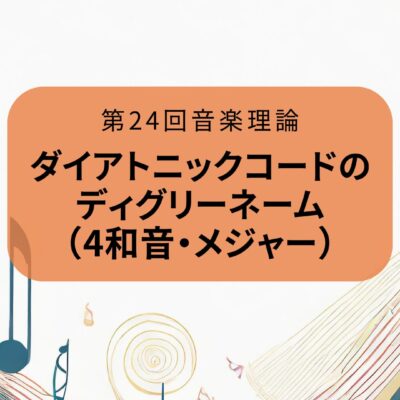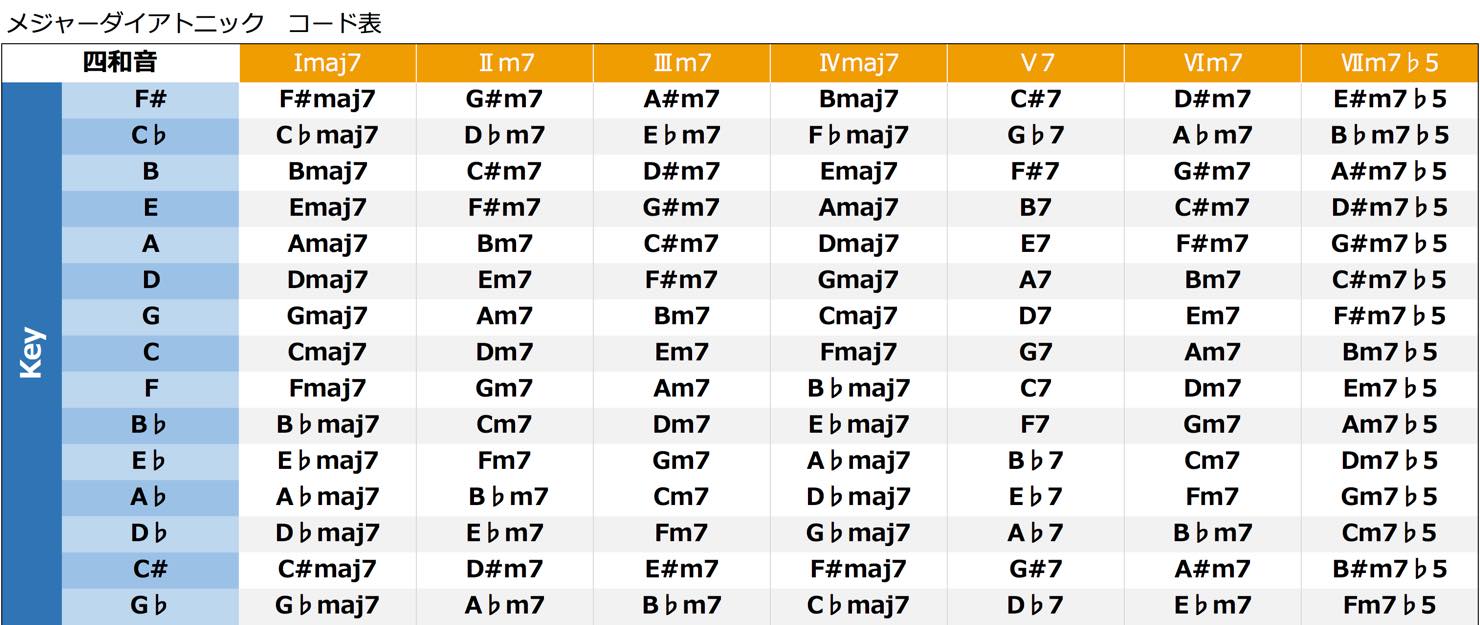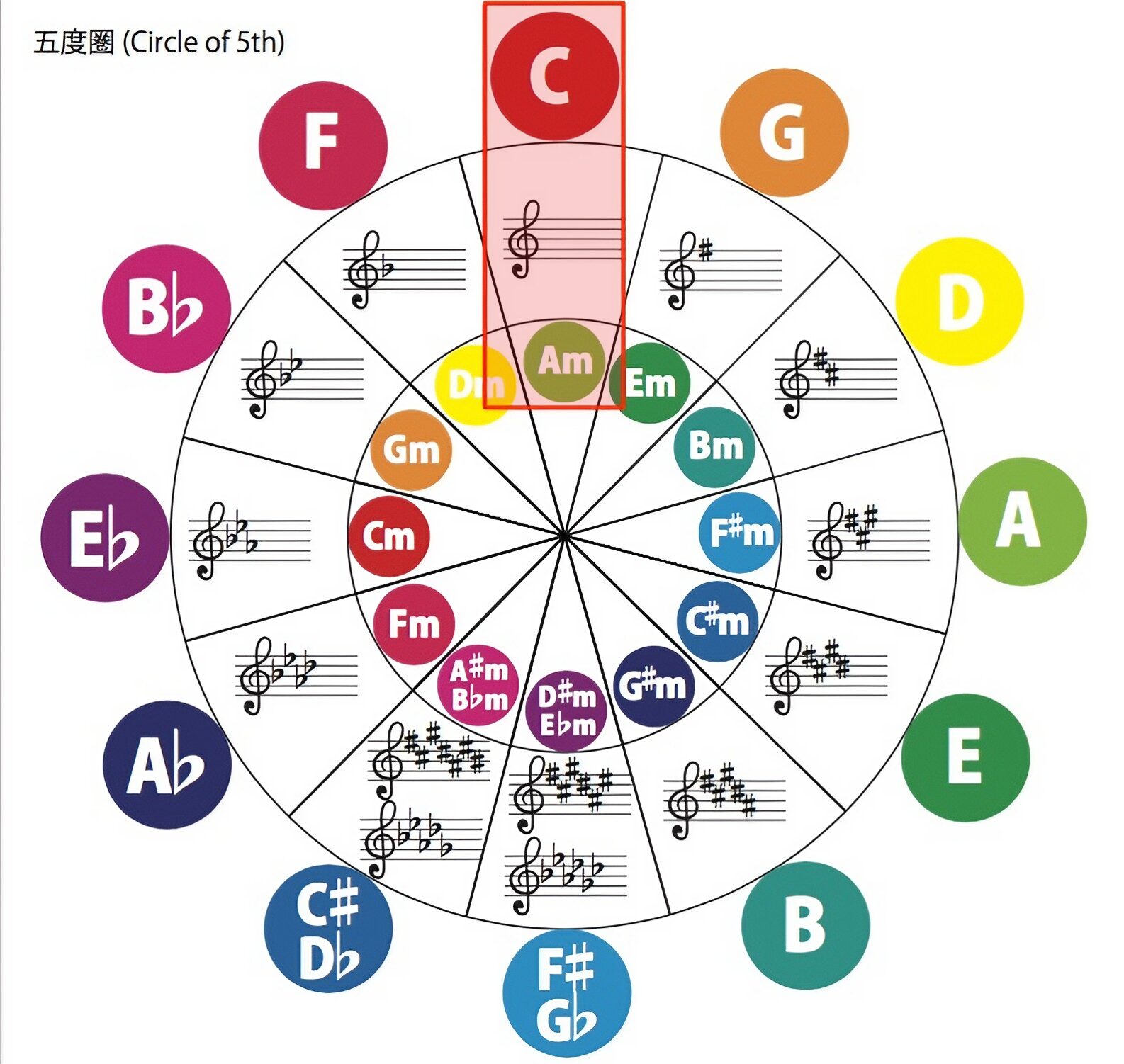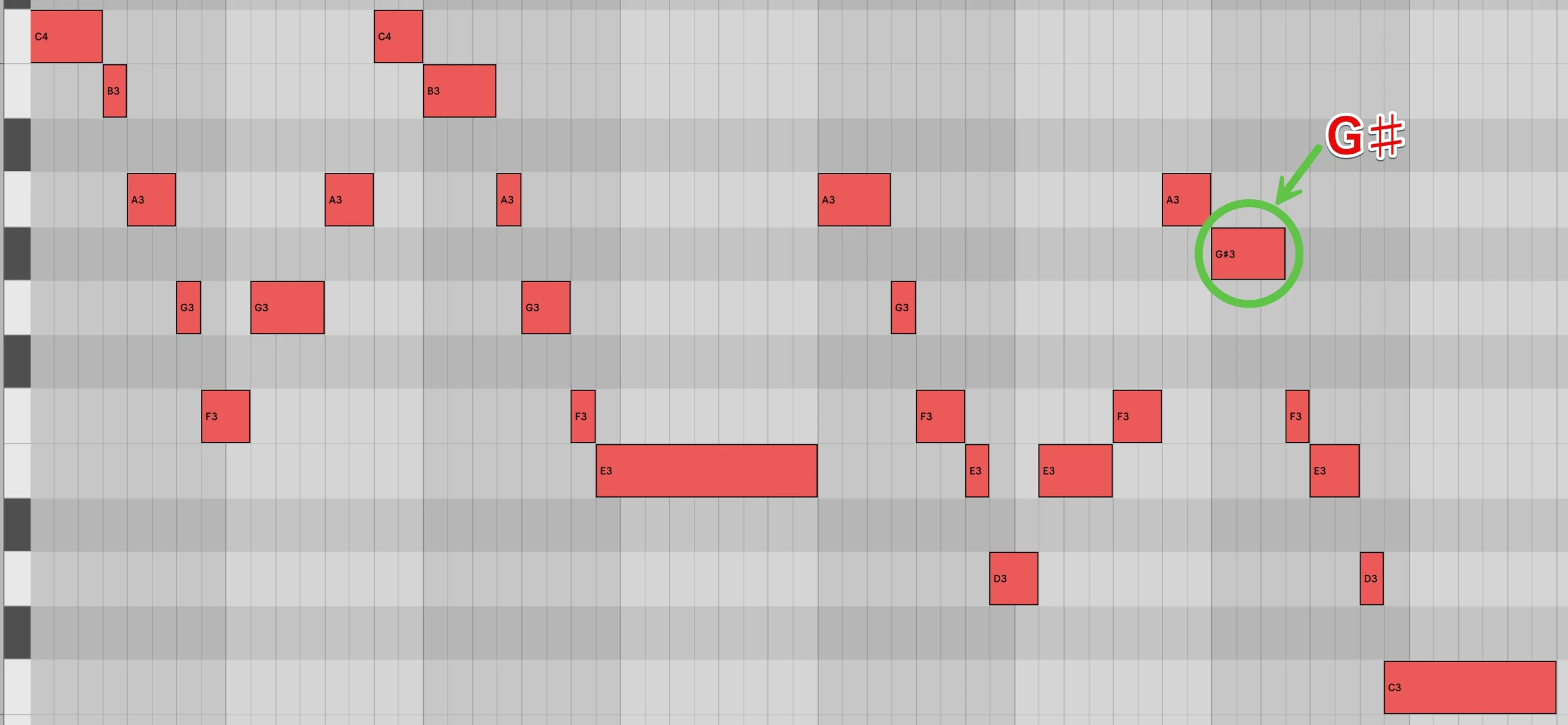ディグリーネーム(4和音)の活用とノンダイアトニックコードの存在/音楽理論講座
4和音コードも含めた実践とノンダイアトニックコードの存在
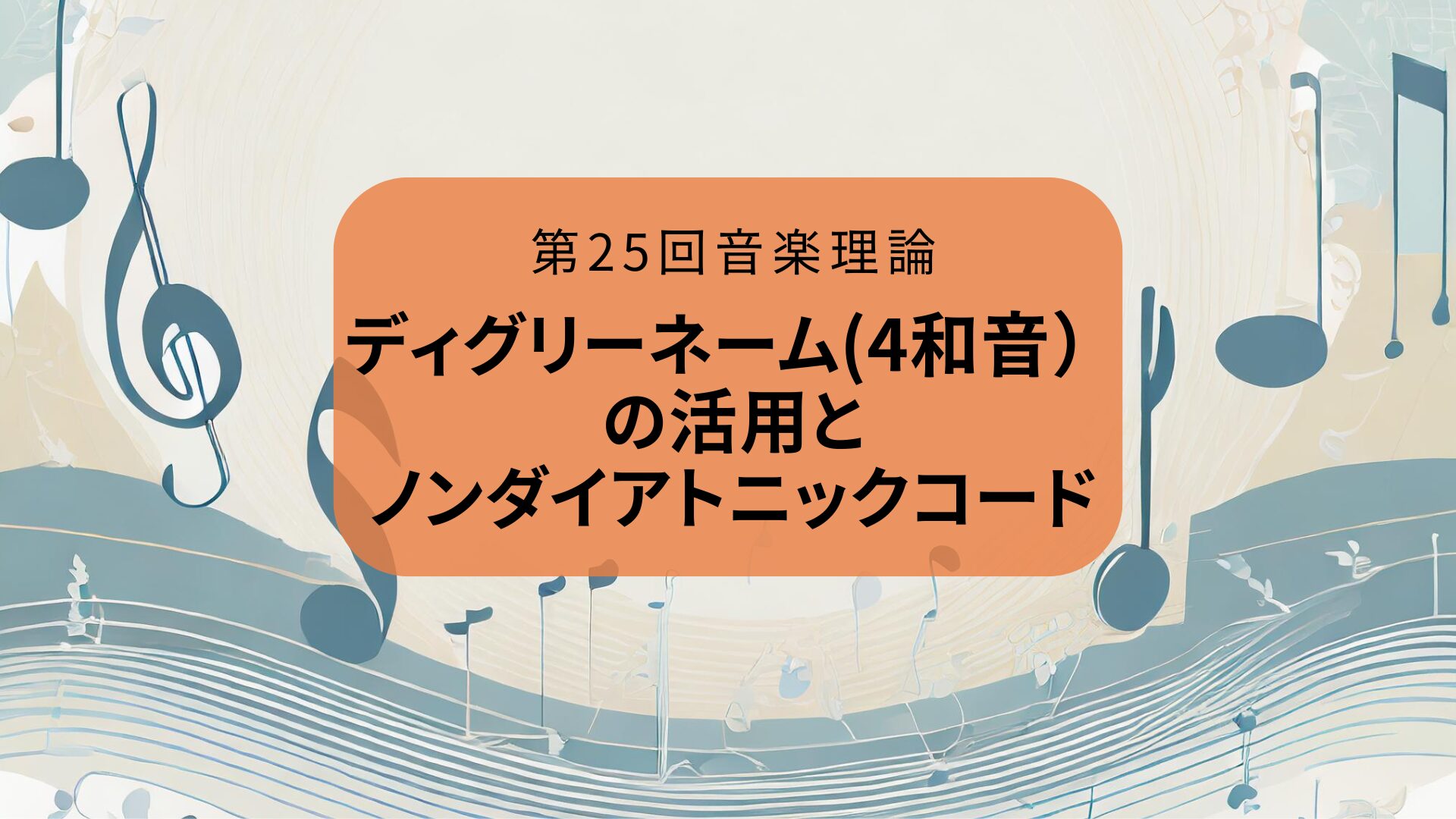
今回は4和音も交え、ディグリーネームを実践的に活用していきましょう。
ノンダイアトニックコードなど先取りの内容も出てきますが、同じ曲を使って進めていきますので、感触だけでも掴んでおいてください。
また、前回の内容が必須となるため、未読の方はそちらから先にご覧ください。
4和音ディグリーネームによる楽曲の分析
まずはこちらのサンプルをお聴きください。
これは世界中の人々にカバーされ、日本でも有名な「Fly Me to the Moon (In Other Words)」の前半の一節です。
非常におしゃれなコード進行ですね。実際はもっとスウィングフィールで演奏されます。
今回は、こちらを解き明かしてみましょう。
まずはキーの把握です。
譜面がある場合は、#や♭の位置を確認すれば容易に把握できますね。
メロディ

コード

#も♭も付いていないキーは…
Cメジャー、もしくはAマイナーのいずれかでしたね。
ところでこの曲は、明るいメジャーの雰囲気から、マイナーのクールで暗い感じにシフトしていると感じませんか?
コードネームも確認してみましょう。
特に最後の3小節あたりで、暗さやマイナー感がありますね。
ここでマイナーセブンスの回を思い出してください。
- マイナーコードは、突き抜けた暗い印象
- マイナーセブンスは、暗さの中にも煌びやかさがある複雑な響き
という例を挙げました。
今回の曲では、最後のコードをAmに置き換えてみると分かりやすいかもしれません。
最後がAm
最後がAm7(オリジナル)
他の曲を聴く際やご自身で作曲する際にも、ぜひこの微妙な違いを意識してみてください。
キーのスケールにはない「♯」や「♭」の扱い
譜面がない場合は、耳コピを行ってメロディーやコードからキーを読み取っていきます。
- メロディ
- コード
ここで改めて気付くと思いますが、Cメジャースケールの音が中心なのにE7のコードではなぜかG#がありますね。
また、C7コードにはB♭が含まれています。
そして、Key=Cメジャーのダイアトニックコードには…
- 3和音
- 4和音
C7やE7といったコードは見当たりません。
これまでの学習を踏まえて好きな曲を解析した際に、ダイアトニックコードにないコードが出てきて、苦戦したという方もいらっしゃるのではないでしょうか。
ここで分かることは、世の中の多くの曲では「ダイアトニックコード以外のコード」=「ノンダイアトニックコード」も使われているということです。
もちろん、ダイアトニックコードだけで作られた素晴らしい曲もたくさんあります。
ノンダイアトニックコードの使い方についてはもう少し先で取り上げますので、ここでは、上記の進行をどう分析するかについてだけ押さえておきましょう。
3和音のときと同じ手順で、表を見ながらディグリーネームに置き換えていきます。
「?」とつく部分以外は今までの要領で分析できました。
では「?」(ノンダイアトニックコード)はどう扱うのでしょうか。
考え方はいたってシンプルです。
21回目でご紹介したように、ディグリーネームの各ローマ数字は、スケールに対応しています。
これを応用して、たとえダイアトニックコードにはなくても、「スケールの何番目か?」でローマ数字に置き換えてしまいましょう。
今回はKey=Cメジャーなので、C7はI7、E7はIII7ということになります。
これで分析ができました。
キーが変わったように聴こえる謎
「Fly Me to the Moon」の最後に感じる暗い展開については、マイナーのダイアトニックコードや各コードの機能(ファンクション)を学ぶことで、異なる見方ができるようになります。
この異なる視点について解説する際も「Fly Me to the Moon」を使用しますので、頭の片隅に入れておいてください。
次回も引き続き、4和音コードも交えた楽曲のキー変更やコード進行の例を取り上げていきます。




